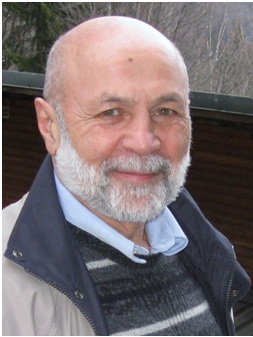Armen Sarvazyan
Armen Sarvazyan is a prominent figure in the field of biophysics and medical imaging, known for his pioneering work in the development of Elastography, a method of medical imaging that maps the elastic properties and stiffness of soft tissue. This technique has significantly impacted the diagnosis and management of various diseases, particularly in the detection and characterization of cancer tumors and liver diseases.
Early Life and Education[edit | edit source]
Armen Sarvazyan's journey in the field of science began in Armenia, where he was born and raised. He pursued his higher education in physics, earning a degree from a leading university in the former Soviet Union. His early academic career was marked by a keen interest in the mechanical properties of tissues and their applications in medical diagnostics.
Career and Contributions[edit | edit source]
After completing his education, Sarvazyan embarked on a career that would see him delve deeper into the study of tissue elasticity and its medical implications. His work led to the development of Elastography in the 1990s, a groundbreaking technique that uses ultrasound or magnetic resonance imaging (MRI) to measure the elasticity of tissue. The principle behind Elastography is that diseased tissues often exhibit different mechanical properties compared to healthy tissues, making it possible to detect and diagnose various conditions through non-invasive imaging.
Sarvazyan's contributions to the field of medical imaging have been widely recognized and celebrated. He has authored numerous scientific publications and holds several patents related to Elastography and other imaging technologies. His research has paved the way for advancements in the diagnosis and treatment of diseases, enhancing the capabilities of medical professionals and improving patient outcomes.
Impact on Healthcare[edit | edit source]
The introduction of Elastography has had a profound impact on healthcare, particularly in the areas of oncology and hepatology. By providing a non-invasive means to assess tissue stiffness, this technology has improved the accuracy of cancer diagnoses, enabled the monitoring of tumor response to treatment, and aided in the assessment of liver fibrosis without the need for a biopsy. Sarvazyan's work has thus contributed to more personalized and effective treatment plans for patients.
Awards and Recognition[edit | edit source]
Throughout his career, Armen Sarvazyan has received numerous awards and accolades in recognition of his contributions to science and medicine. His innovative work in the development of Elastography and its applications in healthcare has established him as a leading figure in the field of medical imaging.
Legacy and Future Directions[edit | edit source]
Armen Sarvazyan's legacy in the field of biophysics and medical imaging continues to influence current research and development. His pioneering work on Elastography has opened new avenues for non-invasive diagnostic methods, with ongoing research focused on enhancing the technology and expanding its applications to other areas of medicine.
As the healthcare industry continues to evolve, the principles and technologies developed by Sarvazyan will remain integral to the advancement of medical imaging and diagnostics, ensuring that his contributions will benefit patients and medical professionals for years to come.
Navigation: Wellness - Encyclopedia - Health topics - Disease Index - Drugs - World Directory - Gray's Anatomy - Keto diet - Recipes
Search WikiMD
Ad.Tired of being Overweight? Try W8MD's physician weight loss program.
Semaglutide (Ozempic / Wegovy and Tirzepatide (Mounjaro / Zepbound) available.
Advertise on WikiMD
WikiMD is not a substitute for professional medical advice. See full disclaimer.
Credits:Most images are courtesy of Wikimedia commons, and templates Wikipedia, licensed under CC BY SA or similar.Contributors: Prab R. Tumpati, MD

